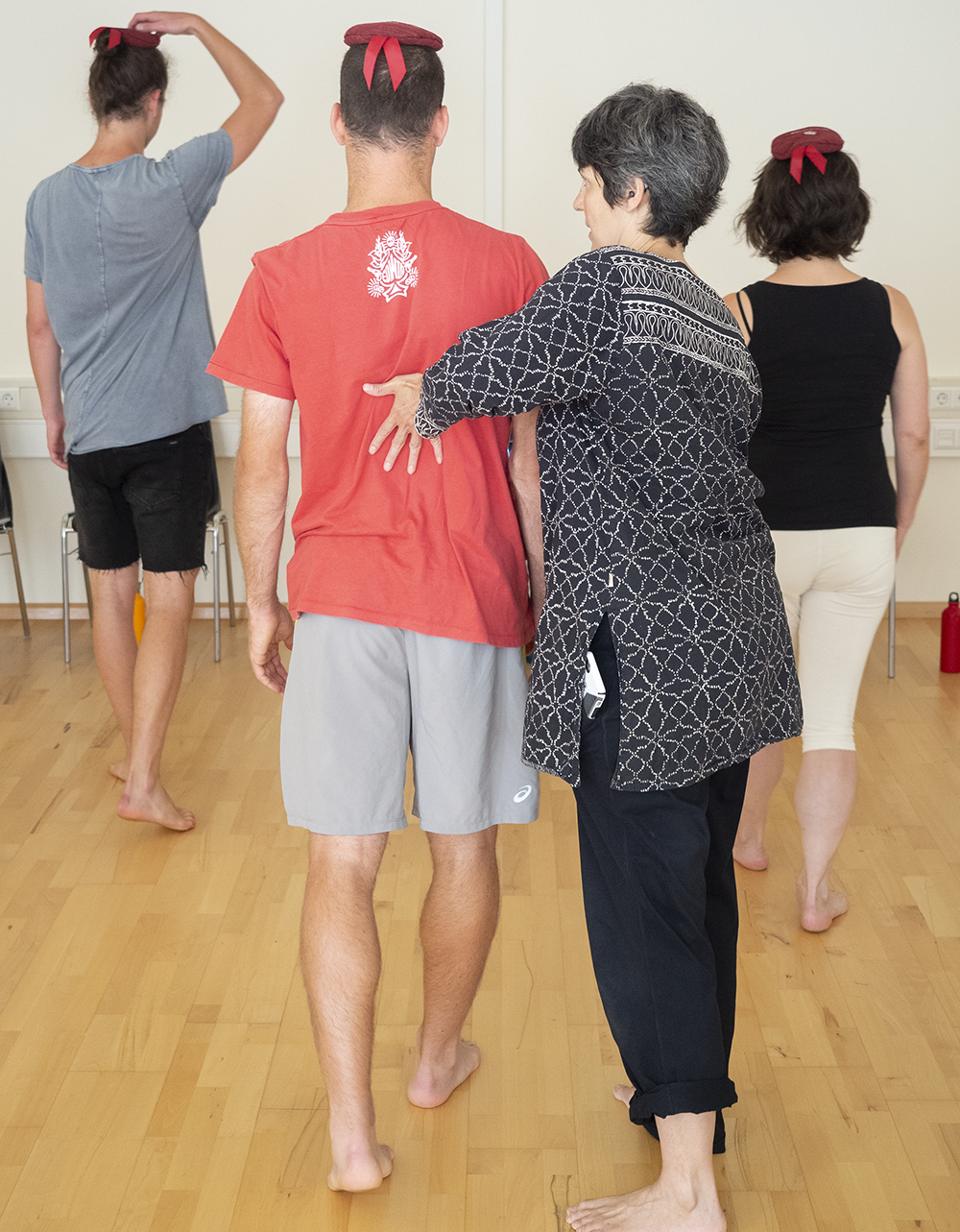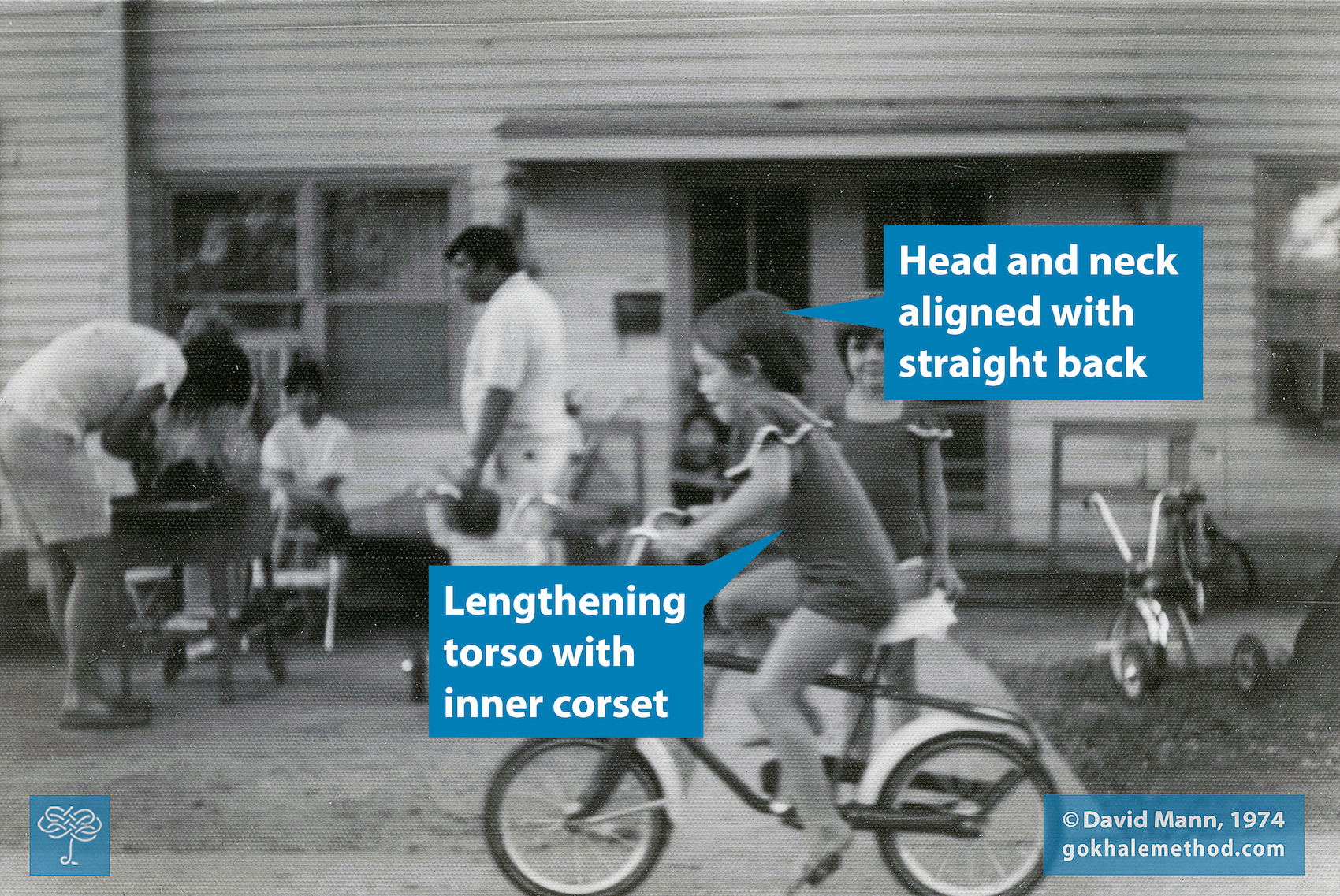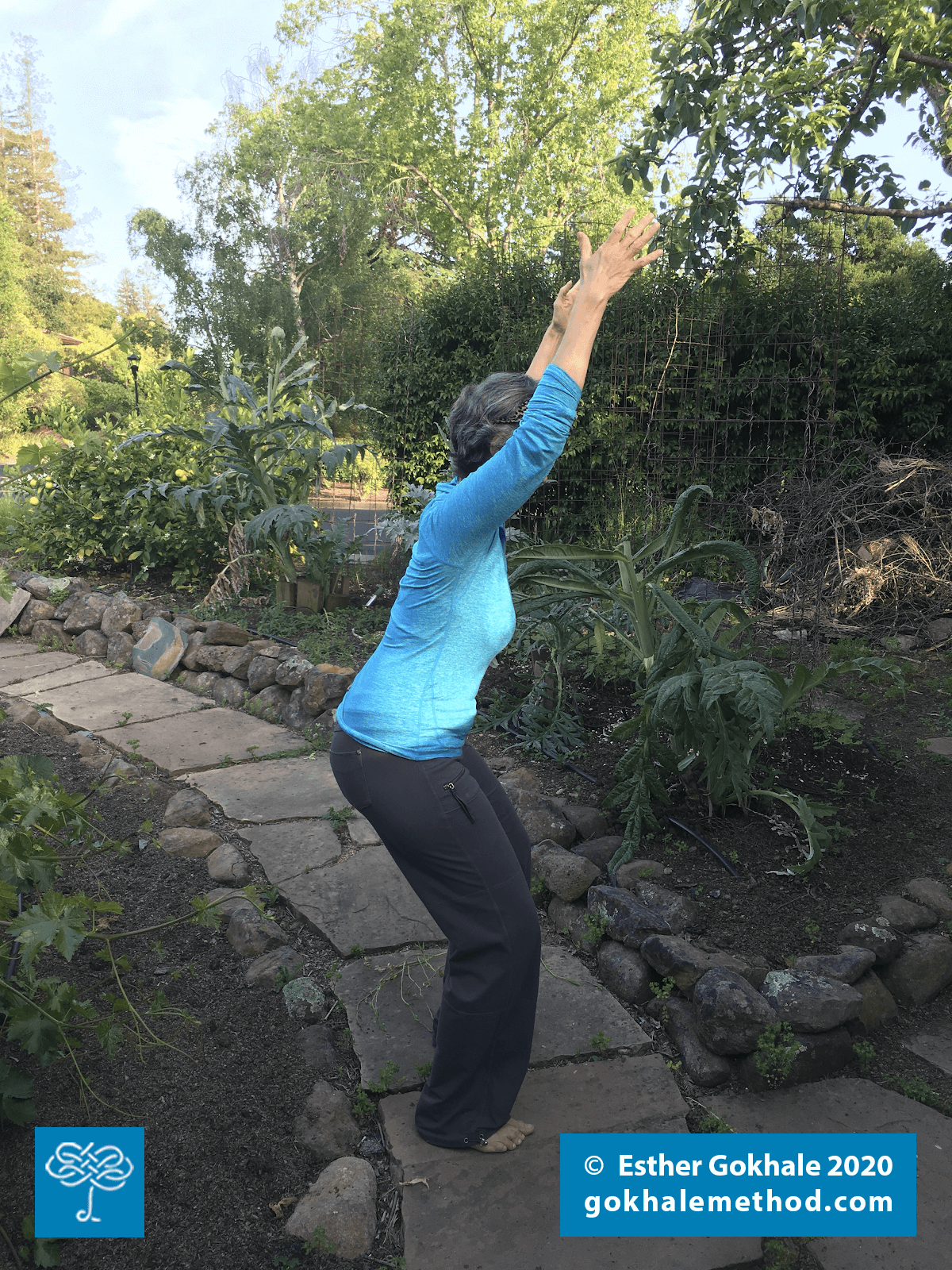Susan’s Success Story
Which Shape is Your Spine?
Prime your Spine with Primal Head-loading
How to Beat Neck and Shoulder Pain While Cycling (Cycling for Everyone, Part 2)
My Favorite Exercises for When You Can't Visit the Gym, Part 1: Chair Pose
Teaching My 95-Year-Old Lithuanian Mom the Gokhale Method, Part 2
Posture in Old Lithuania
Harvesting rye with scythes in early twentieth-century Lithuania. Original photograph Balys Buročas, 1923.
The Gokhale Method has improved my understanding of how posture correlates to our health and physicality. The method is based on healthy body architecture and has been informed by movement patterns from populations without back pain, those shared by our ancestors worldwide. This inspired me to take a look at my own forefathers in Lithuania, especially their posture while laboring in the fields.
Memories of my youth
I was born and raised in urban Soviet Lithuania. Yet, we had a little plot of land outside the city in “kolektyviniai sodai” (collective gardens) and most of our weekends and
What is the Best Ab Exercise?
The abdominal crunch, though ubiquitous, is actually quite detrimental to the spinal discs and nerves. Better to find an abdominal exercise which respects and protects the spine! Image courtesy Jonathan Borba on Unsplash.
Happy Holidays! The dawning of a new year is a time when many people make efforts to establish new habits, many of them body-related. With the desire to improve ourselves often comes a (sometimes unhealthy) heightened awareness of how our bodies and their shapes appear to others. This is particularly true of abdominal muscles. Photoshopped, unrealistic images of sculpted torsos plaster newsstand covers every January. Crunches are the most commonly recommended exercise for
Holiday Poem
Written by Lori Szalay, Gokhale Method Teacher
Here’s a little story I’d like to tell,
Some of you may know it well…..
Twas the day of the Foundations Course and all through the room,
Backs, necks, shoulders and much more were aching and there was a feeling of doom.
The stretchsit cushions were attached on the chairs with care,
A Posture Poised Teacher was there with knowledge to share.
The students knew they would learn to stretchlie to be comfortable in their beds,
As visions of a pain-free life continued to dance in their heads!
With compressed spines, slouchy shoulders and many with rounded backs,
Each had their own concern yet all eager to learn the posture modification facts.
When they
How to Choose a Bike Seat for Good Posture (Part 2)
In our part 1 blog post on the topic of bikes, we went over how to find the right frame for you. The next important step is to find the right seat for your body and your bike, since without a decent seat you may be uncomfortable, or may find it challenging to have healthy posture. Your seat should distribute your weight across regions comfortably; it should have padding, but not so much that it lacks support and stability; it should be set at an angle that allows your pelvis to antevert (that is, tip forward relative to the angle of your spine.) A good seat is crucial whether you prefer to be upright and stacksit, or if you prefer a racing style with a hiphinge. Here’s what you need to know







